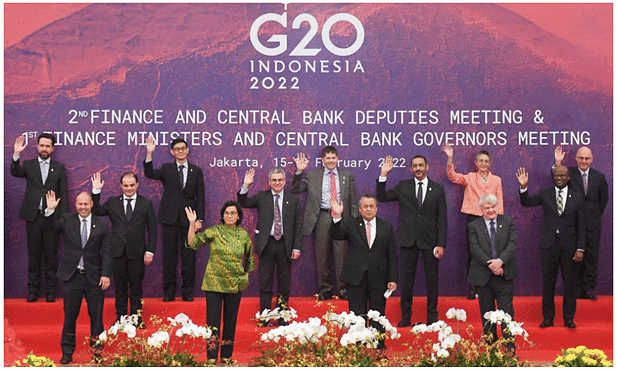List of Important Summits | Current Affairs & General Knowledge - CLAT PDF Download
Summit
A summit is a high-level diplomatic meeting involving heads of state or government, where leaders come together to discuss key international, regional, or bilateral issues. These gatherings are characterized by tight security, intense media coverage, and a predefined agenda. In the modern era, summits play a crucial role in global governance, facilitating cooperation, conflict resolution, and strategic decision-making among nations. From addressing climate change and economic development to enhancing security partnerships, summits reflect a nation's diplomatic priorities and global engagement.
In the context of India, hosting or participating in important summits is not only a mark of diplomatic stature but also a platform to showcase leadership on pressing global issues. The following list provides an overview of the important summits essential for aspirants preparing for various competitive exams.

List of Important Summits
1. G20 Summit
The Group of Twenty (G20) is a premier forum for global economic cooperation, uniting major economies to address issues like financial stability, climate change, and sustainable development. Established in 1999, it became a leaders’ summit in 2008 during the global financial crisis.
Key Objectives:
- Foster global economic stability and growth.
- Address global challenges like climate change, trade, and digital transformation.
- Promote policy coordination among major economies.
Year: 1999 (leaders’ summit from 2008)
Place: Rotating hosts (e.g., New Delhi, India 2023; Rio de Janeiro, Brazil 2024).
Key Terms:
- G20 Presidency: Rotates annually, setting the agenda.
- Troika: Current, previous, and next presidency countries.
India Specific:
India hosted the 2023 G20 Summit in New Delhi (Theme: “One Earth, One Family, One Future”), securing the African Union’s permanent membership and promoting digital infrastructure.
2. APEC Summit (Asia-Pacific Economic Cooperation)
APEC promotes free trade and economic cooperation among Asia-Pacific economies. Founded in 1989, it hosts annual summits to enhance trade, investment, and sustainable growth.
Key Objectives:
- Promote free trade and investment in the Asia-Pacific.
- Enhance regional economic integration and sustainability.
- Address issues like digital economy and climate resilience.
Year: 1989
Place: Rotating hosts (e.g., Malaysia 2020, Peru 2024).
Key Terms:
- Bogor Goals: Commitment to free trade by 2020.
India Specific:
India is not a member but engages as an observer, seeking stronger trade ties with APEC economies.
3. SAARC Summit (South Asian Association for Regional Cooperation)
SAARC fosters regional cooperation in South Asia for economic, social, and cultural development. Founded in 1985, its biennial summits have been disrupted since 2014 due to regional tensions.
Key Objectives:
- Enhance economic and regional integration.
- Promote cooperation in trade, education, and disaster management.
- Foster peace and stability in South Asia.
Year: 1985
Place: Rotating hosts (last summit: Kathmandu, Nepal 2014).
Key Terms:
- SAFTA: South Asian Free Trade Area to reduce trade barriers.
India Specific:
India is a key member but has faced challenges due to tensions with Pakistan, leading to summit cancellations post-2014.
4. ASEAN Summit (Association of Southeast Asian Nations)
ASEAN promotes economic, political, and security cooperation in Southeast Asia. Founded in 1967, it holds two summits annually and engages dialogue partners like India.
Key Objectives:
- Strengthen regional stability and economic integration.
- Promote cooperation in trade, security, and cultural exchange.
- Enhance ASEAN’s role in the Indo-Pacific.
Year: 1967
Place: Rotating hosts (e.g., Indonesia 2023, Laos 2024).
Key Terms:
- RCEP: Regional Comprehensive Economic Partnership, including ASEAN and partners.
India Specific:
India attends ASEAN-India Summits, strengthening trade and strategic ties under its Act East Policy.
5. BRICS Summit
BRICS unites major emerging economies to promote economic and geopolitical cooperation. Founded in 2006, it expanded in 2024 to include new members.
Key Objectives:
- Promote a multipolar world and global governance reform.
- Enhance economic cooperation via the New Development Bank.
- Address global issues like poverty and sustainability.
Year: 2006 (first summit 2009)
Place: Rotating hosts (e.g., Durban, South Africa 2023; Kazan, Russia 2024).
Key Terms:
- NDB: New Development Bank for infrastructure projects.
India Specific:
India is a founding member, hosting summits (e.g., 2016 in Goa) and contributing to NDB initiatives.
6. G7 Summit
The G7 is a group of major developed economies discussing global economic, security, and political issues. Founded in 1975, it holds annual summits.
Key Objectives:
- Coordinate economic policies among democracies.
- Address global challenges like climate change and security.
- Promote democratic values and international cooperation.
Year: 1975
Place: Rotating hosts (e.g., Hiroshima, Japan 2023; Apulia, Italy 2024).
Key Terms:
- G7 Outreach: Invites non-members like India for discussions.
India Specific:
India is a frequent guest, attending summits like Hiroshima 2023 to discuss global issues.
7. East Asia Summit (EAS)
The EAS is a regional forum for strategic dialogue in the Indo-Pacific, involving ASEAN and dialogue partners. Established in 2005, it addresses security and economic issues.
Key Objectives:
- Promote peace, stability, and prosperity in the Indo-Pacific.
- Foster cooperation on maritime security and disaster management.
Year: 2005
Place: Hosted by ASEAN chair (e.g., Cambodia 2022, Indonesia 2023).
Key Terms:
Indo-Pacific Strategy: Focus on a free and open Indo-Pacific.
India Specific:
India uses EAS to advance its Act East Policy and regional influence.
8. BIMSTEC Summit
BIMSTEC promotes cooperation among Bay of Bengal countries in trade, technology, and security. Founded in 1997, it is an alternative to SAARC for India.
Key Objectives:
- Enhance regional connectivity and economic integration.
- Promote cooperation in energy, transport, and counter-terrorism.
Year: 1997
Place: Rotating hosts (e.g., Colombo, Sri Lanka 2022).
Key Terms:
- BIMSTEC Charter: Formalizes structure and objectives.
India Specific:
India leads BIMSTEC, hosting summits (e.g., 2018 virtual) and pushing connectivity projects.
9. SCO Summit (Shanghai Cooperation Organisation)
The SCO focuses on regional security, counter-terrorism, and economic cooperation. Founded in 2001, it holds annual summits.
Key Objectives:
- Strengthen regional security against terrorism and extremism.
- Promote economic cooperation and trade among members.
Year: 2001
Place: Rotating hosts (e.g., India 2023, Kazakhstan 2024).
Key Terms:
- RATS: Regional Anti-Terrorist Structure for counter-terrorism.
India Specific:
India joined in 2017 and hosted the 2023 summit virtually, focusing on connectivity.
10. COP (Conference of the Parties) – UNFCCC
The COP is the decision-making body of the UN Framework Convention on Climate Change, addressing global climate change. Established in 1992, it produced the Paris Agreement.
Key Objectives:
- Negotiate global climate policies and commitments.
- Promote climate finance, adaptation, and mitigation.
- Encourage international climate cooperation.
Year: 1992 (first COP 1995)
Place: Rotating globally (e.g., Glasgow 2021, Dubai 2023).
Key Terms:
- Paris Agreement: Adopted at COP21 (2015) for net-zero emissions.
India Specific:
India ratified the Paris Agreement in 2016, emphasizing climate justice at COP summits.
11. WTO Ministerial Conference (World Trade Organization)
The WTO Ministerial Conference is the WTO’s highest decision-making body, setting global trade rules. Established in 1995, it meets biennially.
Key Objectives:
- Negotiate trade agreements and resolve disputes.
- Promote a rules-based global trading system.
- Address issues like fisheries subsidies and e-commerce.
Year: 1995
Place: Rotating globally (e.g., Geneva 2022, Abu Dhabi 2024).
Key Terms:
- Doha Round: Ongoing trade liberalization negotiations.
India Specific:
India advocates for fair trade policies, protecting developing nations’ interests.
12. NAM Summit (Non-Aligned Movement)
Brief Intro:
The NAM promotes cooperation among countries not aligned with major power blocs. Founded in 1961, it holds summits every 3–5 years.
- Key Objectives:
- Promote sovereignty and development for non-aligned countries.
- Advocate for a multipolar world and global equity.
Year: 1961
Place: Rotating hosts (e.g., Baku, Azerbaijan 2019; Uganda 2023).
- Key Terms:
- Bandung Principles: Core non-alignment principles from 1955.
India Specific:
India is a founding member, hosting summits (e.g., 1983 New Delhi) and shaping NAM’s agenda.
13. CHOGM (Commonwealth Heads of Government Meeting)
The CHOGM is a biennial summit of Commonwealth nations, fostering cooperation on economic and political issues. Established in 1971, it promotes shared values.
Key Objectives:
- Strengthen democratic institutions and economic ties.
- Address global challenges like climate change and human rights.
Year: 1971
Place: Rotating hosts (e.g., Kigali, Rwanda 2022; Apia, Samoa 2024).
Key Terms:
- Commonwealth Charter: Outlines shared values.
India Specific:
India, a key member, hosted CHOGM in 1983 and supports Commonwealth initiatives.
14. Nuclear Security Summit (NSS)
The NSS (2010–2016) aimed to prevent nuclear terrorism by securing nuclear materials. It was a global initiative with summits held in major cities.
Key Objectives:
- Prevent nuclear terrorism through secure nuclear materials.
- Promote international nuclear security standards.
Year: 2010 (first summit)
Place: Washington, D.C. (2010, 2016); Seoul (2012); The Hague (2014).
Key Terms:
- GICNT: Global Initiative to Combat Nuclear Terrorism.
India Specific:
Prime Minister Narendra Modi attended the 2016 NSS in Washington, highlighting India’s nuclear security commitment.
15. IBSA Summit (India, Brazil, South Africa Dialogue Forum)
IBSA is a trilateral forum promoting cooperation among India, Brazil, and South Africa. Founded in 2003, it holds periodic summits to address global and regional issues.
Key Objectives:
- Promote South-South cooperation and development.
- Coordinate on global issues like trade, climate change, and UN reforms.
- Strengthen trilateral economic and cultural ties.
Year: 2003
Place: Rotating hosts (e.g., New Delhi, India 2011; Pretoria, South Africa 2017).
Key Terms:
- IBSA Fund: Supports development projects in least-developed countries.
India Specific:
India is a founding member, hosting summits and leading IBSA’s development initiatives.
|
98 videos|961 docs|33 tests
|
FAQs on List of Important Summits - Current Affairs & General Knowledge - CLAT
| 1. What is a summit? |  |
| 2. What are some of the important summits held globally? |  |
| 3. What is the purpose of holding summits? |  |
| 4. How are decisions made at summits? |  |
| 5. How are participants selected for summits? |  |

















